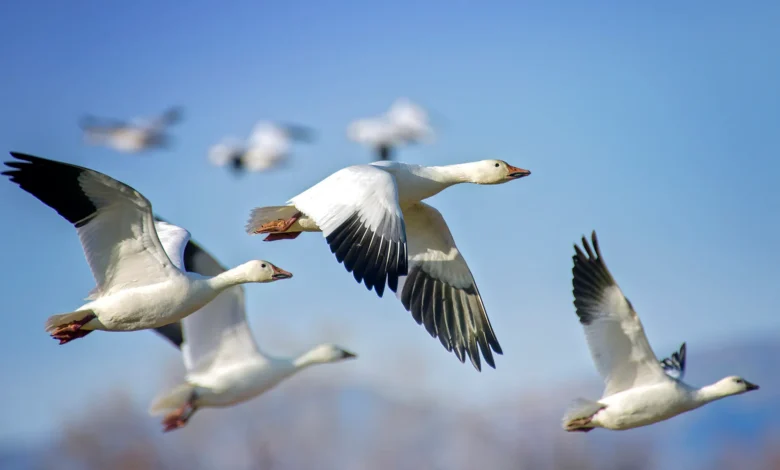What Do Birds Travel In Exploring Their Incredible Migration Journeys

Have you ever wondered, What Do Birds Travel In during their incredible journeys across the skies? Birds take part in one of nature’s most fascinating spectacles—migration! From geese flying in a V-shape to tiny hummingbirds traveling alone, birds travel in unique ways depending on their species and needs.
Birds don’t just travel for fun; they migrate to find food, safe nesting spots, and better weather. Some birds fly thousands of miles, crossing oceans and mountains, while others stay closer to home, traveling short distances. Let’s dive deeper to learn how birds travel and what makes their journeys so special.
What Do Birds Travel In During Migration?
Birds travel in groups, patterns, or alone, depending on their species and needs. Some birds form V-shaped flocks, like geese, while others, such as warblers, migrate solo. The way birds travel can change with their environment and the type of journey they’re making. For example, smaller birds might avoid flying in big groups because they’re more vulnerable to predators.
Birds don’t use airplanes or cars to travel like humans. Instead, they rely on their strong wings and natural instincts. They’ve adapted to cover long distances without rest, and some even travel thousands of miles in one trip. These incredible travelers use landmarks, stars, and even the Earth’s magnetic field to navigate their way.
In some cases, birds travel in flocks to stay safe and conserve energy. Flying in formation reduces wind resistance, helping them go further with less effort. Whether alone or in groups, birds always find a way to complete their incredible journeys.
Why Do Birds Travel Long Distances?
Birds travel long distances to survive. Migration helps them find food, safe nesting spots, and better weather. For instance, when winter arrives, many birds leave colder areas to find warmer places with more food. This ensures they stay healthy and can raise their young.
During spring, birds often return to their breeding grounds in the north. These areas offer plenty of insects and plants, which are important for feeding their chicks. Birds must time their travels perfectly to make the most of seasonal resources.
Long-distance travel is not easy. Birds face many dangers, such as bad weather and predators. Despite these challenges, their instincts and determination help them reach their destination safely.
The Different Types of Bird Travelers: From Short to Long Journeys
Not all birds travel the same way. Some are permanent residents and don’t migrate at all. Others make short trips, like moving down a mountain during winter. These short-distance travelers usually stay within a few hundred miles of their home.
Medium-distance travelers might migrate a few hundred to a thousand miles. For example, certain songbirds move from northern forests to warmer southern regions during winter. Their journeys are challenging but not as extreme as long-distance migration.
Long-distance travelers, like Arctic Terns, cover thousands of miles. These birds move between continents, such as from the Arctic to South America. Their trips are the most impressive, showing just how far birds can go to survive and thrive.
How Birds Find Their Way: Nature’s GPS for Migration
Birds have amazing navigation skills. They use the sun, stars, and even the Earth’s magnetic field to guide them. Scientists believe birds also rely on landmarks like mountains, rivers, and coastlines. These natural tools help them travel without getting lost.
Young birds often migrate for the first time without guidance. Despite this, they manage to find their way to wintering grounds and back. This is due to a mix of instinct and learning from their surroundings.
Some birds also use their sense of smell. This is especially true for pigeons, which can recognize scents to find their way home. Combining all these tools, birds have one of the best natural GPS systems in the animal world.
Conclusion:
In conclusion, birds have amazing ways of traveling. Whether they are migrating thousands of miles or flying short distances, birds use their strong wings and natural tools like the sun and stars to guide them. Some birds travel alone, while others travel in large groups, always following their instincts to reach their destination. Birds don’t need fancy vehicles like us; they are perfectly designed for their journeys in the sky.
Next time you see a bird flying, remember that they might be on an important trip! Birds are great travelers, and understanding how they move helps us appreciate their incredible journeys. So, the next time you wonder, “What do birds travel in?” remember, they travel in the sky with their wings, making their way across the world.
FAQs:
Q: What do birds use to travel long distances?
A: Birds use their wings to travel long distances. Some birds also use the sun, stars, and Earth’s magnetic field to guide them.
Q: Do all birds travel in groups?
A: No, not all birds travel in groups. Some birds travel alone, while others, like geese, travel in large flocks.
Q: How do birds know where to go during migration?
A: Birds use their instincts and natural tools, like the sun and stars, to help them find the right direction.
Q: Can birds travel in cars or planes?
A: Yes, sometimes birds are transported in cages or special containers in cars or planes, especially when moved by humans.
Q: Do birds travel in the same routes every year?
A: Yes, most birds follow the same migration routes every year to reach their destinations.



